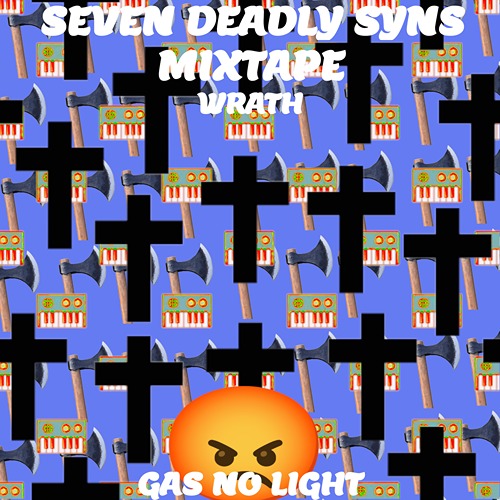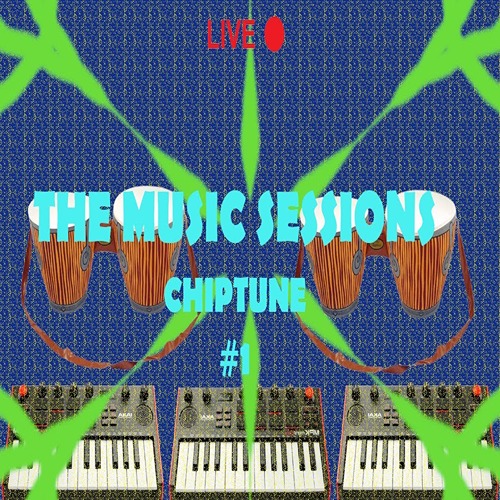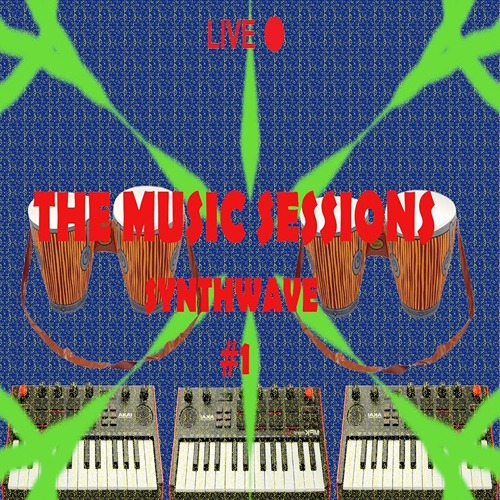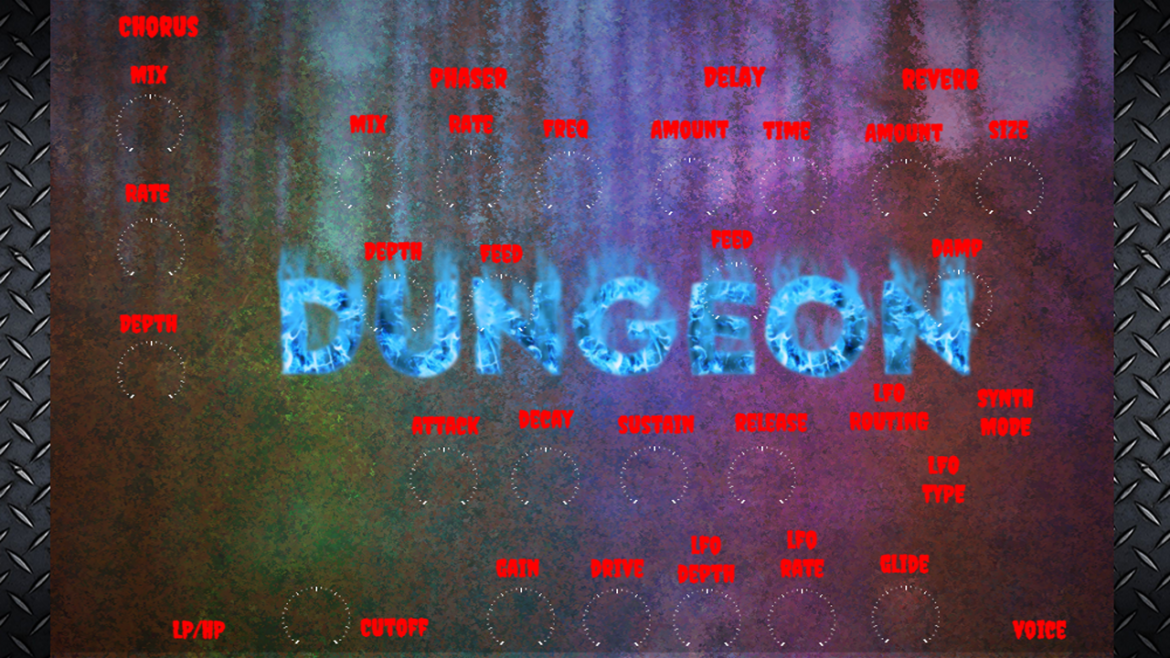BANDCAMP NEWS
17/09/2023 - New Mixtape; Seven Deadly Syns Mixtape - Wrath

This is five of seven of my mixtape series Seven Deadly Syns pronounced the normal way as in sin and is all synthy instrumentals related to the sin and there are seven in total. I enjoy putting the mixtape and the visual together and I made all the beats as well and are just some of my now unreleased tracks that were on Spotify etc. but I swapped artist names so they are now all unreleased dating back to around 2018 when I started remaking music and playing the keyboard. This one is Wrath so it’s angry, moody, violent and dark probably the darkest of the seven mixtapes and my favourite as I like my music dark and moody with thick basses and synths and I hope you do too.
Wrath or rage, is an intense emotional state involving a strong uncomfortable and non-cooperative response to a perceived provocation, hurt or threat. A person experiencing anger will often experience physical effects, such as increased heart rate, elevated blood pressure, and increased levels of adrenaline and noradrenaline. Some view anger as an emotion which triggers part of the fight or flight response. Anger becomes the predominant feeling behaviorally, cognitively, and physiologically when a person makes the conscious choice to take action to immediately stop the threatening behaviour of another outside force.
Anger can have many physical and mental consequences. The external expression of anger can be found in facial expressions, body language, physiological responses, and at times public acts of aggression. Facial expressions can range from inward angling of the eyebrows to a full frown. While most of those who experience anger explain its arousal as a result of “what has happened to them”, psychologists point out that an angry person can very well be mistaken because anger causes a loss in self-monitoring capacity and objective observability.
Modern psychologists view anger as a normal, natural, and mature emotion experienced by virtually all humans at times, and as something that has functional value for survival. Uncontrolled anger can negatively affect personal or social well-being and negatively impact those around them. While many philosophers and writers have warned against the spontaneous and uncontrolled fits of anger, there has been disagreement over the intrinsic value of anger. The issue of dealing with anger has been written about since the times of the earliest philosophers, but modern psychologists, in contrast to earlier writers, have also pointed out the possible harmful effects of suppressing anger.
Judaism
Main article: Anger in Judaism
In Judaism, anger is a negative trait. In the Book of Genesis, Jacob condemned the anger that had arisen in his sons Simon and Levi: “Cursed be their anger, for it was fierce; and their wrath, for it was cruel.”
Restraining oneself from anger is seen as noble and desirable, as Ethics of the Fathers states:
Ben Zoma said:
Who is strong? He who subdues his evil inclination, as it is stated,
“He who is slow to anger is better than a strong man, and he who masters his passions is better than one who conquers a city” (Proverbs 16:32.)
Maimonides rules that one who becomes angry is as though that person had worshipped idols. Rabbi Shneur Zalman of Liadi explains that the parallel between anger and idol worship is that by becoming angry, one shows a disregard for Divine Providence – whatever had caused the anger was ultimately ordained from Above – and that through coming to anger one thereby denies the hand of God in one’s life.
In its section dealing with ethical traits a person should adopt, the Kitzur Shulchan Aruch states: “Anger is also a very evil trait and it should be avoided at all costs. You should train yourself not to become angry even if you have a good reason to be angry.”
In modern writing, Rabbi Harold Kushner finds no grounds for anger toward God because “our misfortunes are none of His doing.” In contrast to Kushner’s reading of the Bible, David Blumenthal finds an “abusing God” whose “sometimes evil” actions evoke vigorous protest, but without severing the protester’s relationship with God.
Christianity
Both Catholic and Protestant writers have addressed anger in different perspectives.
Catholic
The Seven Deadly Sins and the Four Last Things, by Hieronymus Bosch (1485). “Wrath” is depicted at the bottom in a series of circular images. Below the image is the Latin inscription Cave Cave Deus Videt (“Beware, Beware, God is Watching”).
Angel with Temperance and Humility virtues versus Devil with Rage and Wrath sins. A fresco from the 1717 Saint Nicholas Orthodox Church in Cukovets, Pernik Province, Bulgaria
Wrath is one of the Seven Deadly Sins in Catholicism; and yet the Catechism of the Catholic Church states (canons 1772 and 1773) that anger is among the passions, and that “in the passions, as movements of the sensitive appetite, there is neither good nor evil”. The neutral act of anger becomes the sin of wrath when it’s directed against an innocent person, when it’s unduly unbending or long-lasting, or when it desires excessive punishment. “If anger reaches the point of a deliberate desire to kill or seriously wound a neighbour, it is gravely against charity; it is a mortal sin” (CCC 2302). Hatred is the sin of desiring that someone else may suffer misfortune or evil and is a mortal sin when one desires grave harm (CCC 2302-03).
Medieval Christianity vigorously denounced wrath as one of the seven cardinal, or deadly sins, but some Christian writers at times regarded the anger caused by injustice as having some value. Saint Basil viewed anger as a “reprehensible temporary madness.” Joseph F. Delany in the Catholic Encyclopedia (1914) defines anger as “the desire of vengeance” and states that a reasonable vengeance and passion are ethical and praiseworthy. Vengeance is sinful when it exceeds its limits in which case it becomes opposed to justice and charity. For example, “vengeance upon one who has not deserved it, or to a greater extent than it has been deserved, or in conflict with the dispositions of law, or from an improper motive” are all sinful. An unduly vehement vengeance is considered a venial sin unless it seriously goes counter to the love of God or of one’s neighbour.
A more positive view of anger is espoused by Roman Catholic pastoral theologian Henri J.M. Nouwen. Father Nouwen points to the spiritual benefits of anger toward God as found in both the Old Testament and New Testament of the Bible. In the Bible, says Father Nouwen, “It is clear that only by expressing our anger and hatred directly to God will we come to know the fullness of both his love and our freedom”.
Georges Bernanos illustrates Nouwen’s position in his novel The Diary of a Country Priest. The countess gave birth to the son she had long wanted, but the child died. She was fiercely angry. When the priest called, the countess vented her anger toward her daughter and husband, then at the priest who responded gently, “Open your heart to [God]”. The countess rejoined, “I’ve ceased to bother about God. When you’ve forced me to admit that I hate Him, will you be any better off?” The priest continued, “You no longer hate Him. Hate is indifference and contempt. Now, at last, you’re face to face with Him … Shake your fist at Him, spit in His face, scourge Him.” The countess did what the priest counselled. By confessing her hate, she was enabled to say, “All’s well.”
Protestant
Saul attacks David (who had been playing music to help Saul feel better), 1860 woodcut by Julius Schnorr von Karolsfeld, a Lutheran
Everyone experiences anger, Andrew D. Lester observes, and furthermore, anger can serve as “a spiritual friend, a spiritual guide, and a spiritual ally”. Denying and suppressing anger is contrary to St. Paul’s admonition in his Epistle to the Ephesians 4:26. When anger toward God is denied and suppressed, it interferes with an individual’s relationship with God. Expressing one’s anger toward God can deepen the relationship. C. FitzSimons Allison holds that “we worship God by expressing our honest anger at him”.
Biblical scholar Leonard Pine concludes from his studies in the Book of Habakkuk that “far from being a sin, proper remonstration with God is the activity of a healthy faith relationship with Him”.[141] Other biblical examples of anger toward God include the following:
Moses was angry with God for mistreating his people: “Lord, why have you mistreated [lit. done evil to] this people?” (Book of Exodus 5:22).
Naomi was angry with God after the death of her husband and two sons: “The Almighty has dealt bitterly with me. The Almighty has brought calamity upon me” (Book of Ruth 1:20–21 abr).
Elijah was angry with God after the son of the widow died: “O Lord my God, have you brought calamity even upon the widow with whom I am staying, by killing her son?” (1 Kings 17:20).
Job was angry with God: “You have turned cruel to me; with the might of your hand you persecute me” (Book of Job 30:21).
Jeremiah was angry with God for deceiving his people: “Ah, Lord God, how utterly you have deceived this people and Jerusalem” (Book of Jeremiah 4:10).
Hinduism
In Hinduism, anger is equated with sorrow as a form of unrequited desire. The objects of anger are perceived as a hindrance to the gratification of the desires of the angry person. Alternatively if one thinks one is superior, the result is grief. Anger is considered to be packed with more evil power than desire. In the Bhagavad Gita, Krishna regards greed, anger, and lust as signs of ignorance that lead to perpetual bondage. As for the agitations of the bickering mind, they are divided into two divisions. The first is called avirodha-prīti, or unrestricted attachment, and the other is called virodha-yukta-krodha, anger arising from frustration. Adherence to the philosophy of the Māyāvādīs, belief in the fruitive results of the karma-vādīs, and belief in plans based on materialistic desires are called avirodha-prīti.
Jñānīs, karmīs and materialistic planmakers generally attract the attention of conditioned souls, but when the materialists cannot fulfil their plans and when their devices are frustrated, they become angry. Frustration of material desires produces anger.
Buddhism
Anger is defined in Buddhism as: “being unable to bear the object, or the intention to cause harm to the object”. Anger is seen as aversion with a stronger exaggeration, and is listed as one of the five hindrances. Buddhist monks, such as Dalai Lama, the spiritual leader of Tibetans in exile, sometimes get angry. Most often a spiritual person is aware of the emotion and the way it can be handled. Thus, in response to the question: “Is any anger acceptable in Buddhism?’ the Dalai Lama answered.
Buddhism, in general, teaches that anger is a destructive emotion and although anger might have some positive effects in terms of survival or moral outrage, I do not accept that anger of any kind is a virtuous emotion or aggression as constructive behaviour. The Gautama Buddha has taught that there are three basic kleshas at the root of samsara (bondage, illusion) and the vicious cycle of rebirth. These are greed, hatred, and delusion—also translatable as attachment, anger, and ignorance. They bring us confusion and misery rather than peace, happiness, and fulfilment. It is in our own self-interest to purify and transform them.
Buddhist scholar and author Geshe Kelsang Gyatso has also explained Buddha’s teaching on the spiritual imperative to identify anger and overcome it by transforming difficulties;
When things go wrong in our lives and we encounter difficult situations, we tend to regard the situation itself as our problem, but in reality, whatever problems we experience come from the side of the mind. If we responded to difficult situations with a positive or peaceful mind they would not be problems for us. Eventually, we might even regard them as challenges or opportunities for growth and development. Problems arise only if we respond to difficulties with a negative state of mind. Therefore if we want to be free from problems, we must transform our minds.
The Buddha himself on anger
An angry person is ugly & sleeps poorly. Gaining a profit, he turns it into a loss, having done damage with word & deed. A person overwhelmed with anger destroys his wealth. Maddened with anger, he destroys his status. Relatives, friends, & colleagues avoid him. Anger brings loss. Anger inflames the mind. He doesn’t realize that his danger is born from within. An angry person doesn’t know his own benefit. An angry person doesn’t see the Dharma. A man conquered by anger is in a mass of darkness. He takes pleasure in bad deeds as if they were good, but later, when his anger is gone, he suffers as if burned with fire. He is spoiled, blotted out, like fire enveloped in smoke. When anger spreads, when a man becomes angry, he has no shame, no fear of evil, and is not respectful in speech. For a person overcome with anger, nothing gives light.
The colour of Wrath is red and punishment in hell is to be dismemberded.










